Tonjiru (Butajiru) Japanese Pork Miso Soup
Ingredients
- 200 g slab skinless pork belly chilled
- 350 g daikon radish peeled, thickly sliced and quartered
- 150 g carrot roughly cut into bitesize pieces
- 75 g burdock root (gobo) peeled and thinly sliced diagonally
- 20 g fresh shiitake mushroom stems removed and thinly sliced
- 50 g Japanese leek (naganegi) thinly sliced diagonally
- 400 g konjac (konnyaku) cut into bitesize pieces
- 60 g fried tofu pouch (aburaage) thinly sliced
- ½ tbsp butter
- 1500 ml dashi stock
- 6-7 tbsp yellow miso paste (awase)
- 1 tsp Japanese soy sauce (koikuchi shoyu)
- 1 tsp mirin
- toasted sesame oil to garnish
- finely chopped green onions optional
- Japanese chili powder (shichimi togarashi) optional
Instructions
Prep
- Cut the 200 g slab skinless pork belly into slices 2mm thick. (I recommend doing this straight from the fridge.)
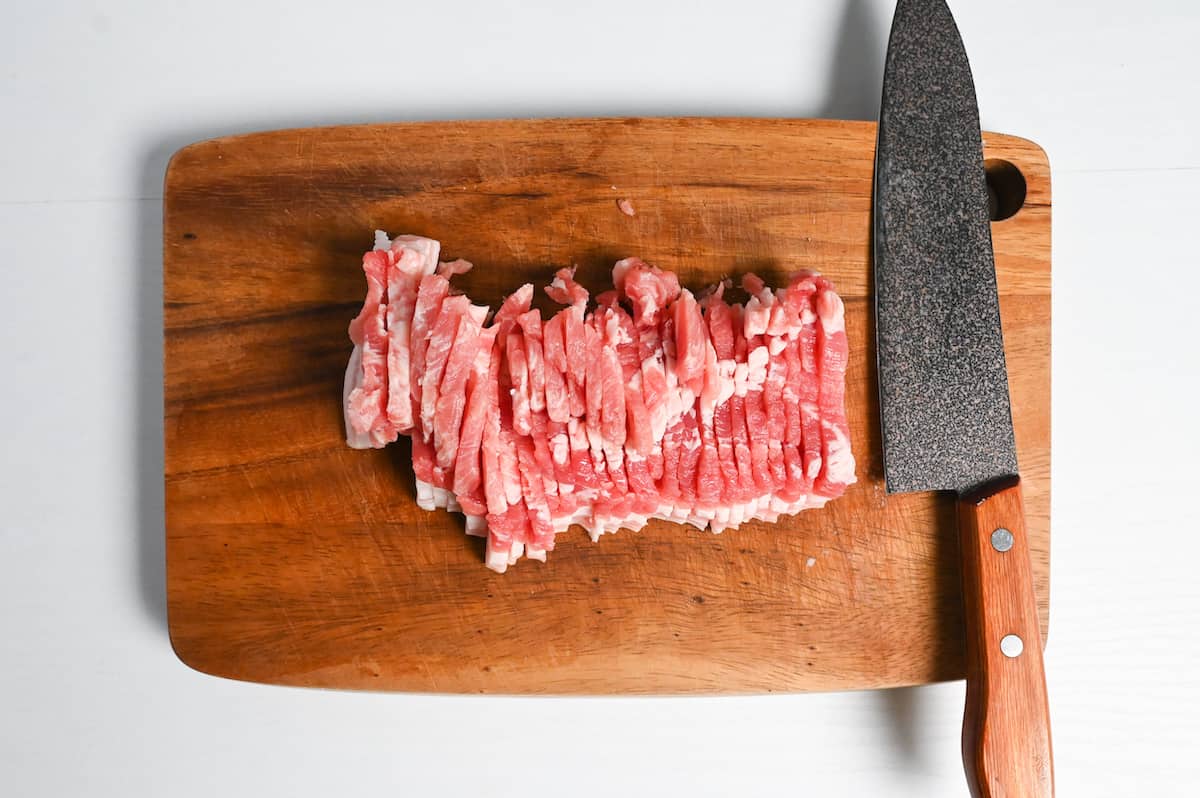
- Wash, peel and cut 350 g daikon radish, 150 g carrot, 75 g burdock root (gobo), 20 g fresh shiitake mushroom, 50 g Japanese leek (naganegi) and 60 g fried tofu pouch (aburaage) according to the notes in the ingredients list.
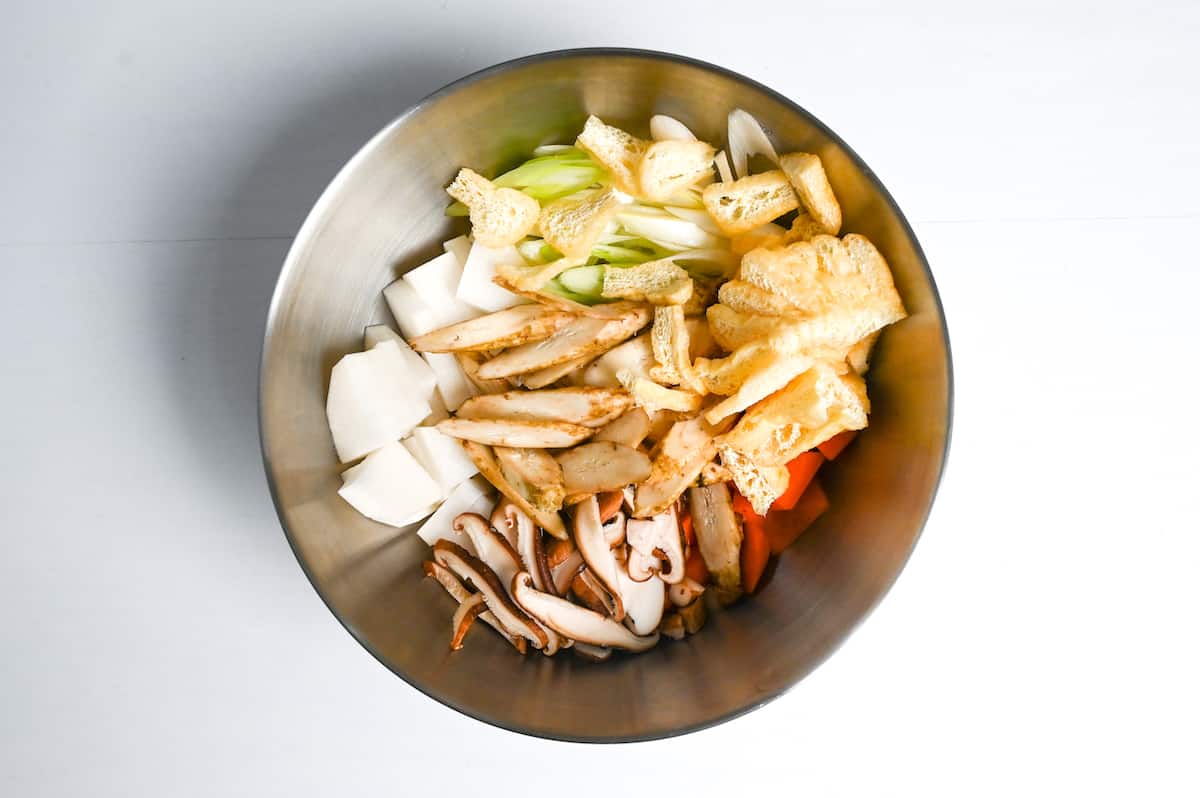
- Use a spoon to break 400 g konjac (konnyaku) into bitesize pieces. Blanch and wash with cold water.
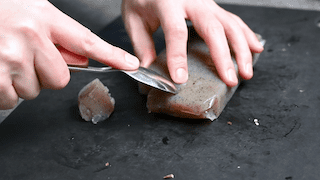
Cooking
- Heat a large pot on medium and once hot, add ½ tbsp butter. Add the pork belly slices and seal on both sides.
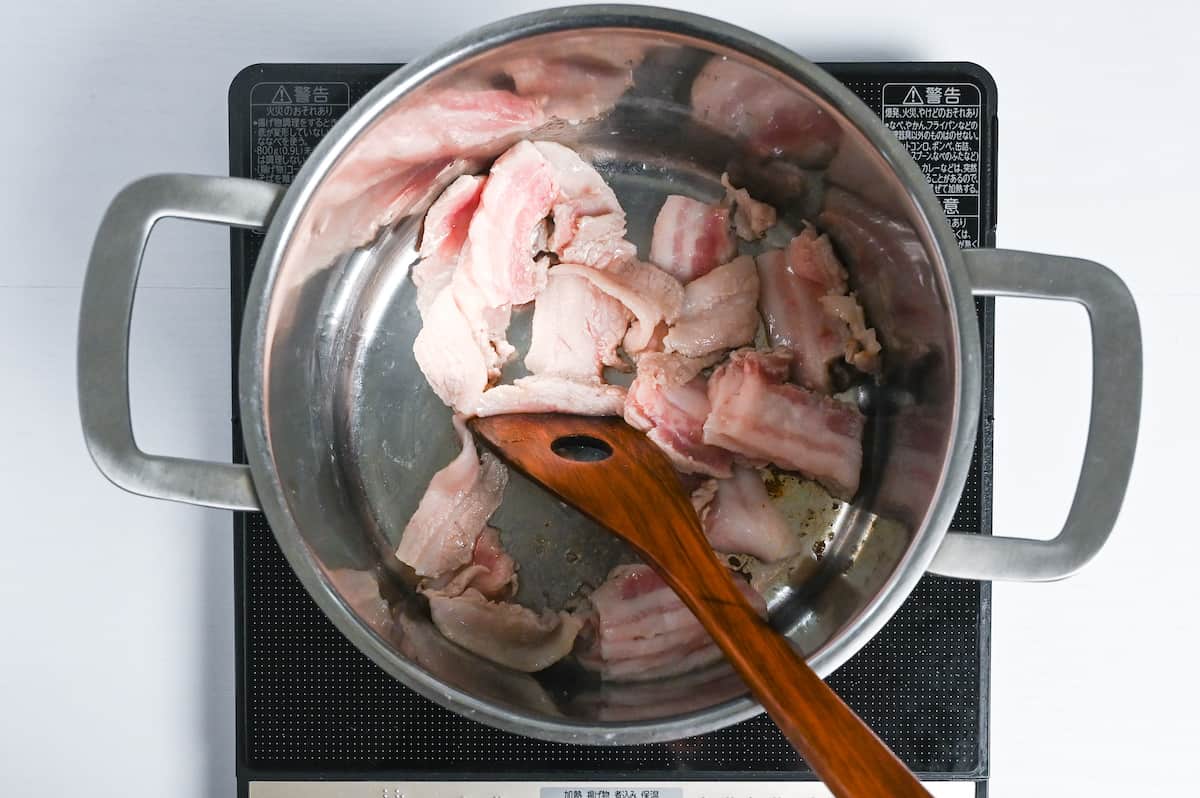
- Add the burdock root to the pot and stir fry for 1 minute.

- Next, add the carrot, daikon radish, mushroom, konjac and aburaage, and mix everything together.
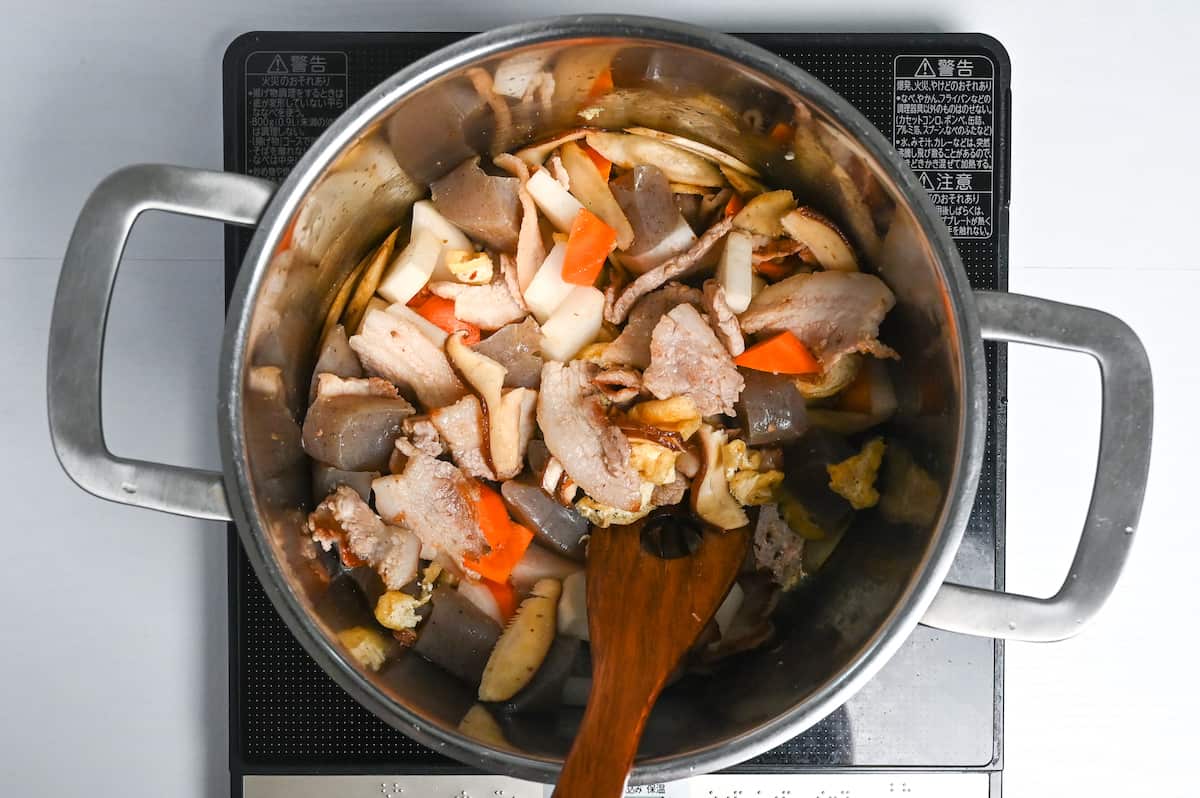
- Pour 1500 ml dashi stock into the pot and stir.

- Measure out 6-7 tbsp yellow miso paste (awase) and add half of it to the soup by placing it in a mesh spoon or ladle, submerging it into the broth and whisking on the spoon to break it up. Mix and simmer for 15 minutes.
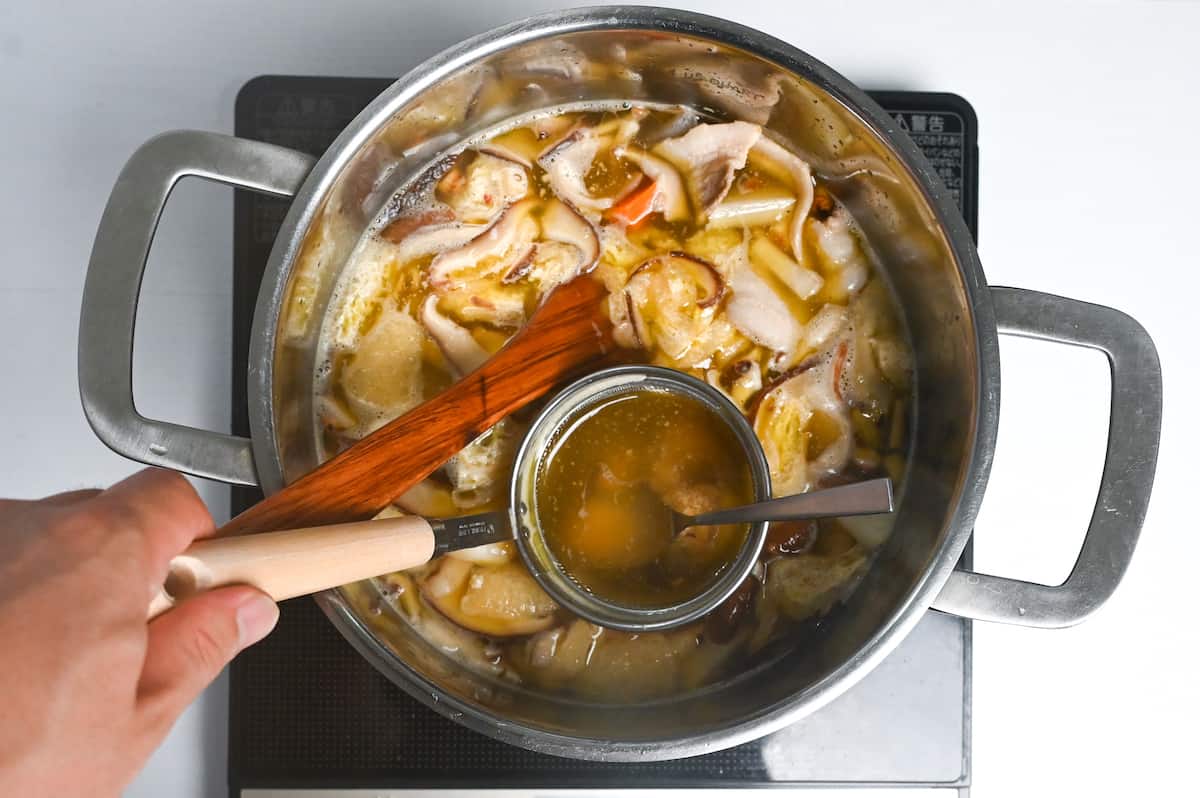
- Scoop off any foam that develops on the surface of the soup. (This will prevent the broth from becoming cloudy.)
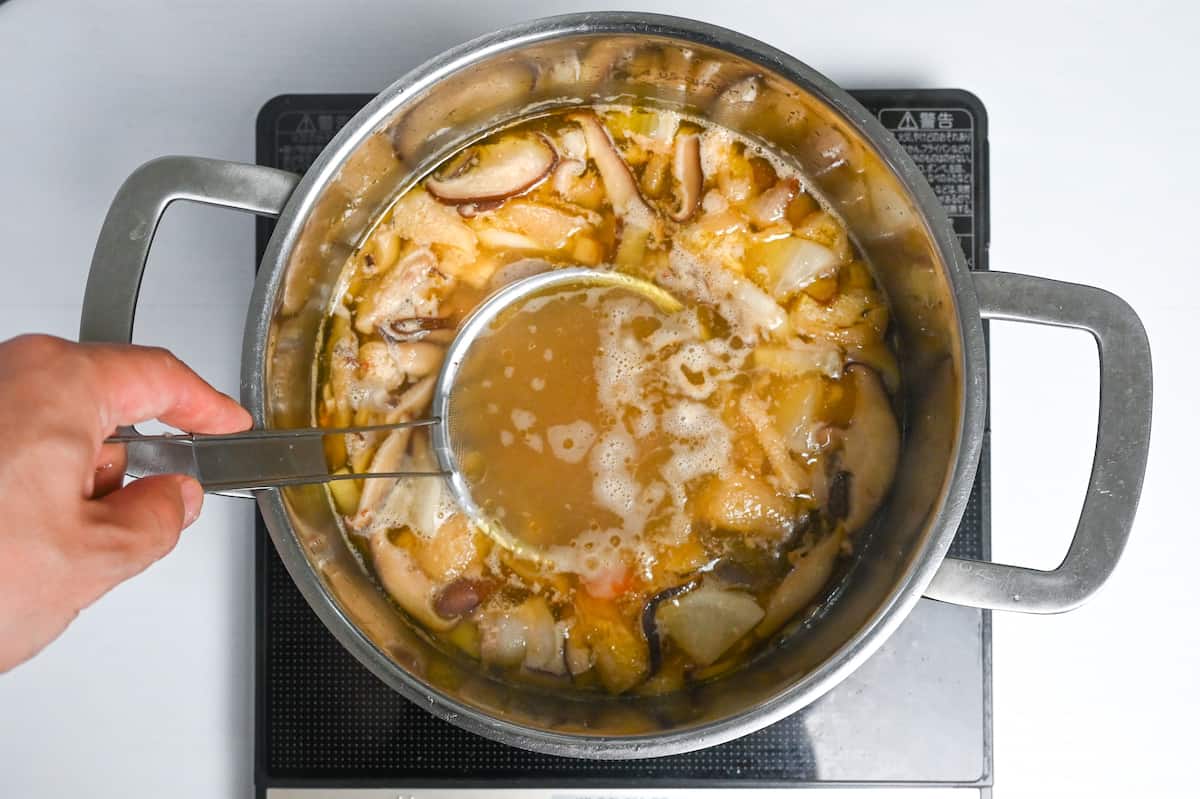
- Add the sliced green onion and simmer for another 10 minutes.
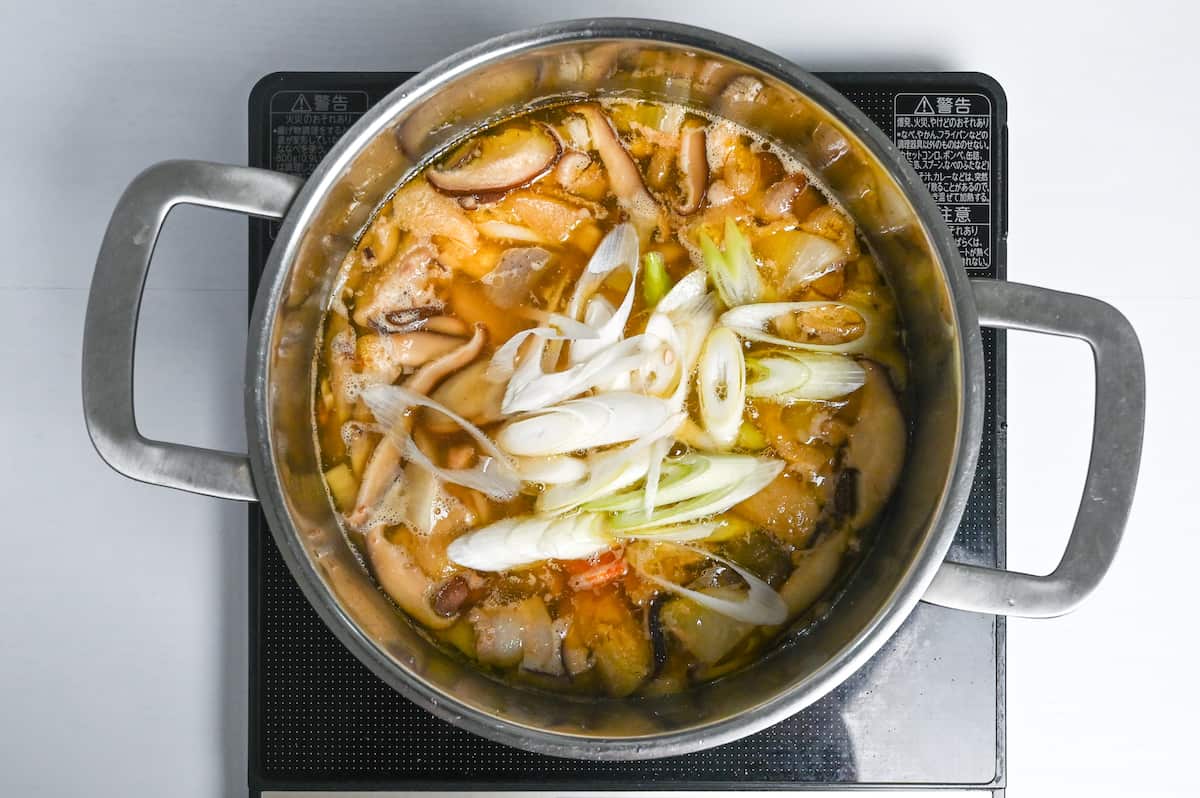
- Add 1 tsp Japanese soy sauce (koikuchi shoyu) and 1 tsp mirin, then turn off the heat. Add the rest of the miso paste using the same technique as before. Taste test and add more miso paste if needed.
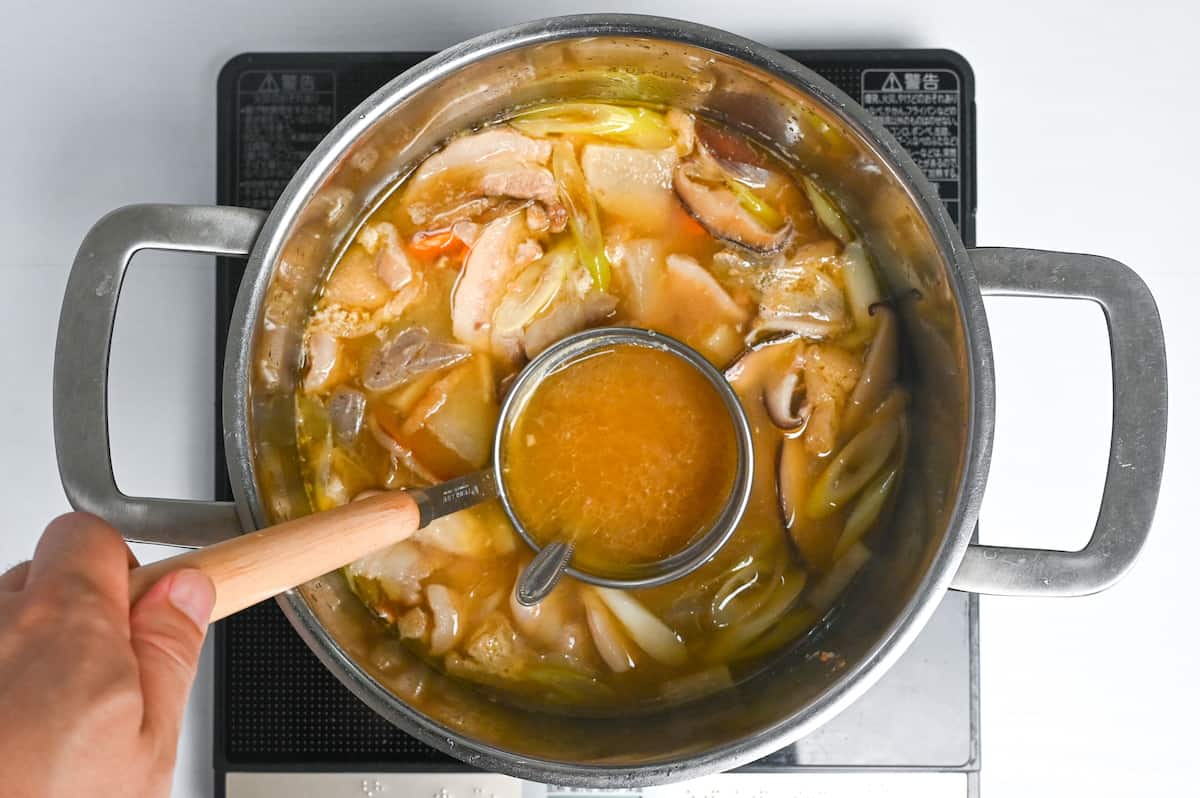
- Divide into serving bowls and top with a drizzle with toasted sesame oil, finely chopped green onions and a sprinkle of Japanese chili powder (shichimi togarashi) (optional).
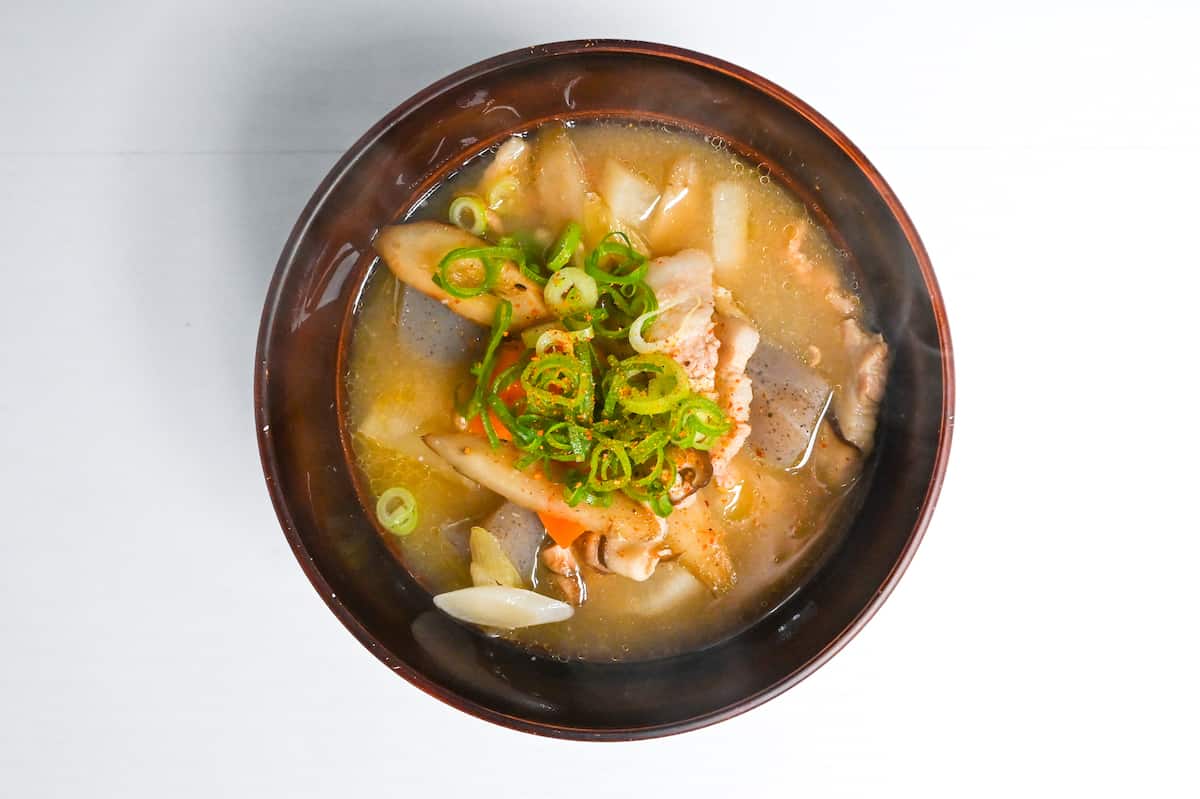
- Enjoy!
Notes
- Choose between pork options: use pork belly block for meatier texture, or traditional thin-sliced pork belly for lighter taste.
- Add a variety of vegetables and tofu to develop complex, deep flavors in the soup.
- Add miso in two stages: first round to flavor vegetables, final round just before serving to maximize taste.
- If you have leftovers, you can store them in the fridge and eat them within 2-4 days, depending on season and climate (see in post for more details).
- Do not freeze tonjiru.
- When reheating, heat on the stove and turn off the heat just before it starts to boil. (Overcooking will diminish the flavor of the miso paste.)